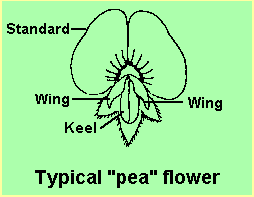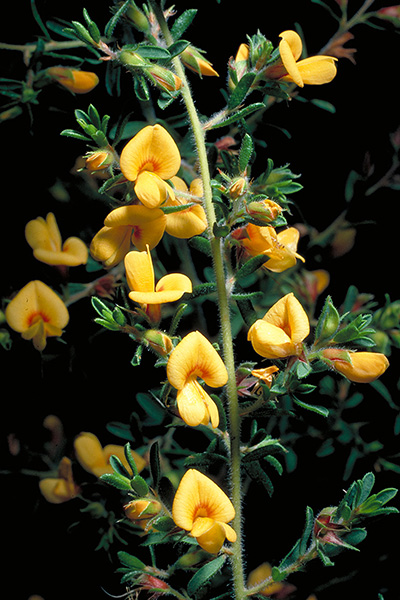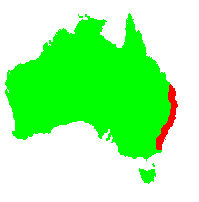General Description:
The genus Pultenaea consists of around 120 species, all of which are Australian endemics and which can be found in all states and territories. All are small to medium shrubs commonly referred to as “bush peas”. Together with some related genera such as Dillwynia and Phyllota they are also referred to as “eggs and bacon”, a reference to the yellow flowers with red markings.
Pultenaea villosa is a medium shrub which can reach 2 metres in height with a 2.5 metre spread. The leaves are small (about 5mm long) with short hairs and a greyish appearance.

The flowers of P.villosa have the typical “pea” shape consisting of 4 petals; the “standard”, the “keel” and two “wings”, as shown in the diagram. The flowers are longer than they are wide (about 15mm long by 10mm across), which is typical of most species in the genus. Flowering is mainly in spring but it may extend into summer. The flowers are followed by small seed pods.
This is one of the easier pultenaeas to cultivate and it has been grown by enthusiasts for many years. It is best suited to moist, well drained soils with some light, overhead protection from full sun. It does not, however, grow well in heavy shade. It tolerates at least moderate frost.
Propagation is easy from seed following pre-treatment to break the physical dormancy provided by the impervious seed coat. Pre-treatment can be carried out by abrasion or by the use of boiling water (further details can be found in under the “Propagation” tab of the “Pea Family” page). The seed retains viability for many years. Cuttings strike well using firm, current season’s growth, however, constant misting should be avoided as the hairy foliage tends to hold water and rotting may occur.

Pultenaea villosa
Photo: Brian Walters
 Australian Native Plants Society (Australia)
Australian Native Plants Society (Australia)